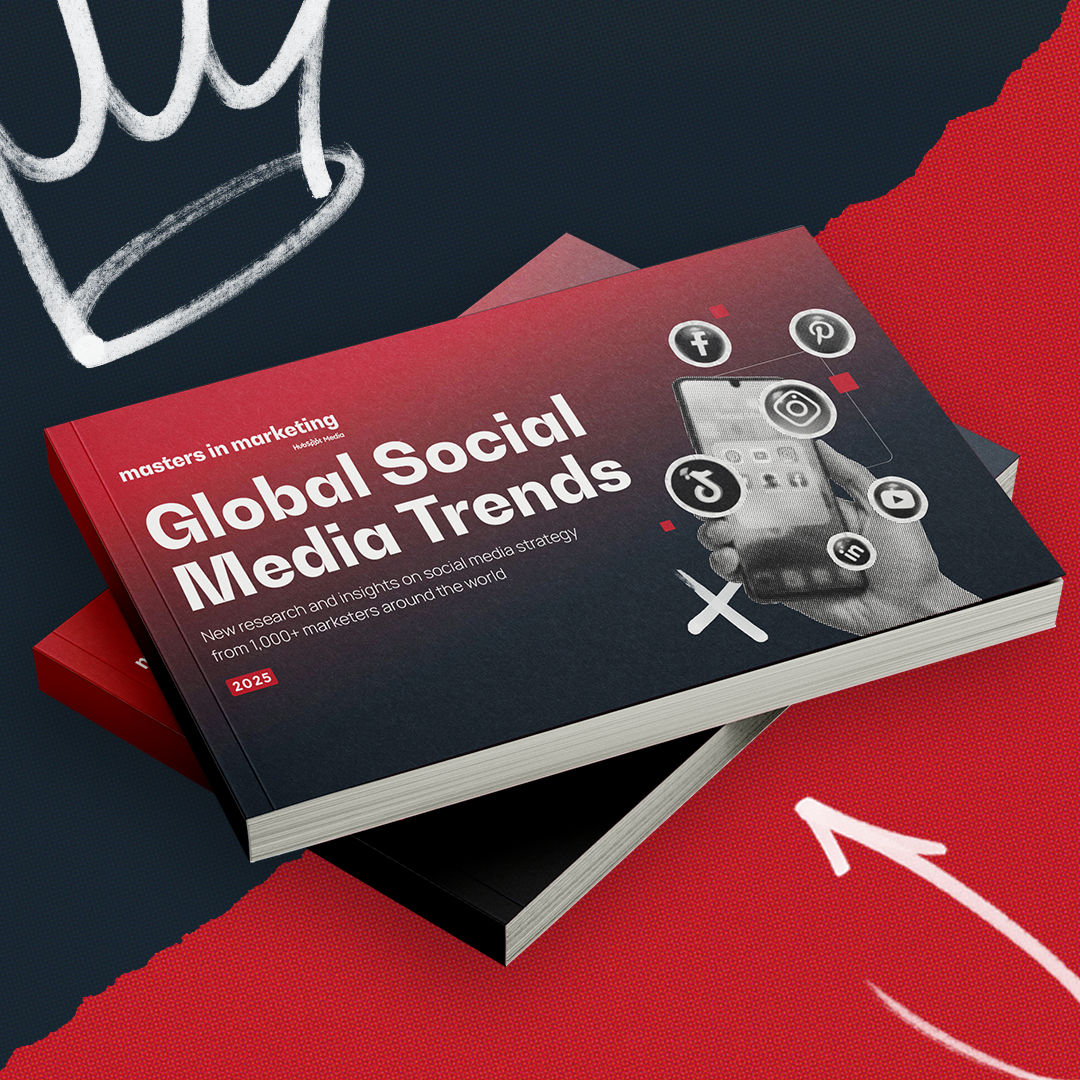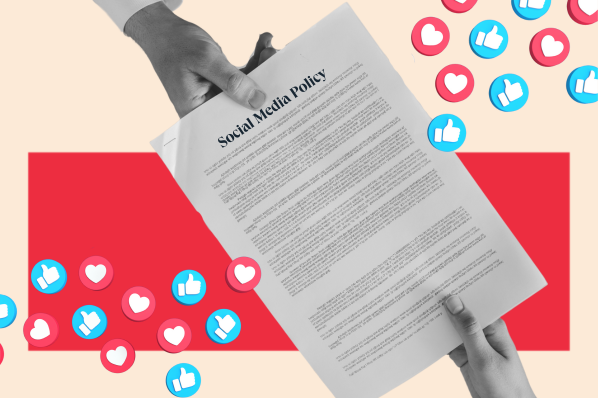Table of Contents
- What is a social media algorithm?
- Facebook’s News Feed Algorithm
- Twitter’s Timeline Algorithm
- The Instagram Feed’s Algorithm
- TikTok For You Page Algorithm
- Other Key Algorithms
Essentially, social media algorithms analyze user behavior and prioritize content the platform believes the user wants to see and is most likely to engage with.

News Feed Algorithm
Each major social media platform has its own version of a "news feed" style algorithm. Below we’ll dive into the specifics of feed algorithms for Facebook, Twitter, Instagram, and TikTok, but here’s an overview of what the algorithms for these platforms factor in when prioritizing content.
Engagement
When you first create an account on a social media platform, you’re more likely to see a mix of random content that may not align with your interests. But over time, you’ll see the content will be more in line with your interests. How does that happen?
Social media platforms quickly learn your interests and preferences based on what kind of content you engage with. Once a platform has a good idea of what a user is likely to engage with, they are going to prioritize that type of content in the user’s feed.
Time on Platform
Why does what you engage with matter so much? Well, the more time you spend engaging, the more time you’re likely to spend on a platform. When you spend more time on a platform, you’re susceptible to see (and buy from) advertising that is shown to you. And the more time you spend engaging on a social media platform, the more insight that platform has into your preferences, purchases, and habits.
Now let’s get into the details of how the Facebook, Twitter, and Instagram algorithms work.
Facebook's News Feed Algorithm
Since the inception of the largest social media platform to date, Facebook's news feed has been focuses on personalizing the social media app's user experience.
How It Works
The Like button has always been the epicenter of Facebook's user experience — not only because we see it on everyone's posts but because it allows us to personalize our experience (and influence everyone else's).
Nowadays, the algorithm that governs Facebook's News Feed has become much more sophisticated. It isn't just about the Like button anymore — and not just because reaction buttons are now in the mix. In fact, Facebook's algorithm is by far the most complicated of the three social networks covered in this post.
Facebook provided more information about how its algorithm works in late 2022, and we know that its Feed algorithm works to prioritize the most meaningful posts at the top of your Feed in a four-step process. Here’s a quick rundown of the most important things Facebook’s Feed algorithm considers.
Inventory
Inventory is the total number of posts you might see when you open Facebook. Posts that friends share, pages you follow, and groups you’ve joined are prioritized, followed by content recommended based on your activity.
Signals
For each post in your “inventory,” the algorithm considers who posted it, how you’ve interacted with similar posts in the past, the format, how popular it is with factors like your friends' interactions with it, and what pages have reshared it. Each of these factors is a signal, and signals help the algorithm decide what content from your inventory to feature.
Predictions
Predictions are the third step in the ranking process. The algorithm uses signals to make personalized predictions of how relevant a post is to you from things like:
- If it’s from friends and family
- How likely you might be to interact with it
- If it’s content you’d be able to find on your own
- Quality indicator (original content)
- Surveys sent to other users to ask if content is “worth their time.” Posts ranked as more worthwhile show up higher in your Feed.
Relevancy Score
Relevancy scores are calculated by weighing signals and predictions. Once every post in your possible inventory is assigned a relevancy score, they’re sorted and ranked for your feed. Higher relevance scores mean a post is more likely to interest you and is placed higher in your Feed.
Every time you log in, the post you see at the top of your News Feed was chosen over thousands of others as the one most likely to make you react and engage.
Ads get relevancy scores, too, and Facebook shows users ads that might matter most to them.
Again, this is supposed to give users a better experience — but it's also helpful for the businesses paying for the ads. It's calculated based on the positive feedback (video views, conversions, etc.) and negative feedback Facebook expects an ad to receive from its target audience. (Learn more about the relevancy score for Facebook ads here.)
Ways to Customize Your Facebook News Feed
As a Facebook user, you can customize your Facebook Feed to see more of what you want.
When you want to prioritize a person or page to "see first," their posts will appear at the top of your News Feed. To prioritize the people or pages you want to see first:
- Click your profile picture
- Tap the gear icon to open Settings & privacy
- Tap News Feed under Preferences
- Tap one of the five list options to manage what you’ll see in your feed. Here’s what each option means:
- Favorites - People and pages to prioritize
- Snooze - Snooze content to temporarily stop seeing posts
- Unfollow - Unfollow people, pages, or groups to stop seeing their posts
- Reconnect - Reconnect with those you’ve unfollowed
- Reduce - Manage content that you’ve reduced or moved lower in your feed
Twitter's Timeline Algorithm
Whereas Facebook makes most of the decisions about what will show up in your Facebook News Feed, Twitter's historically taken a very different approach with what it calls the "Timeline."
As of 2023, there are two timelines you’ll see content on: For You and Following.
How It Works
Following Timeline
Your Following is the stream of Tweets you see from the users you follow. Tweets in this tab used to be in chronological order but now are ranked based on factors like:
- Interactions - Accounts you interact with frequently or are more likely to interact and engage with
- Recency - The recency of the topics discussed and how much engagement content is getting
- Activity - The algorithm also monitors how long it has been since you were last online and the likelihood of you having missed content from accounts you often engage and interact with
For You Timeline
According to Twitter, the For You timeline shows suggested content from accounts and topics you’re interested in or have displayed interest in. The recommendation system for a For You timeline follows three main steps: candidate sourcing, ranking, heuristics, filters, and product features.
- Candidate sourcing - Finding candidates (individual Tweets) from people you follow (in-network) and don’t follow (out-of-network). Twitter says there is a 50% balance of in and out-of-network content.
- Ranking - Candidates get a predictive score of relevance to your interests.
- Heuristics, filters, and product features - After ranking candidates, it applies product features (like accounts you mute), author diversity (avoiding too many Tweets from one author, and content balance (in and out of network tweets).
With these three steps, the algorithm ranks content in your For You timeline in addition to social proof, which is excluding out of network tweets without a second degree of connection to you. Once everything is ranked, you’re fed a selection of Tweets blended with ads and follow recommendations.
Is Twitter Moving Away From a Real-Time Timeline?
Twitter has moved away from what original users might call a real timeline, where Tweets were displayed chronologically. Now there are two timelines to view, and Tweets on both are displayed based on different factors and chronology.
Twitter isn't the only social media platform iterating its algorithm to show the most interesting content first — Instagram's algorithm is giving Facebook and Twitter a run for their money.
The Instagram Feed's Algorithm
As of June 2023, Instagram has more than 2 million active users on the platform, making it a hotspot for marketers in nearly any industry.
Instagram uses machine learning to determine what content you’ll appreciate most and creates a Feed that prioritizes that content from people you follow, recommended accounts, and ads.
Instagram says the signals (ranking factors) it uses are:
- Your activity - Posts you’ve liked, shared, saved, or commented on to assess what you’re interested in.
- Information about the post - How popular a post is regarding engagement among other users (likes, speed of likes, shares, comments, etc.) and location data, if available.
- Information about who posted it - How interesting a person might be to you and how many people have interacted with them in the past few weeks.
- Your interaction history - How interested you are in seeing posts from a specific person or topic.
It also considers recent posts from the people you follow, posts from accounts you don’t follow but might be interested in, and the format (i.e., if you prefer photos, you’ll see more photos).
From there, the algorithm makes predictions on how likely you are to take action, and the more likely you are to take action, the more heavily it’s weighted and the higher it will be in your feed.
What about the Reels, Shop, and Explore pages?
Each Instagram feature has its own algorithm tailored to how people use it.
The Stories algorithm defines the potential stories shared by accounts you follow based on input signals like:
- Your viewing history of an account’s Stories to prioritize those you don’t want to miss.
- Engagement history and how often you engage with an account's Stories.
- Closeness, or your overall relationship with the poster.
It then predicts how likely you are to find a story relevant and valuable, tap through, or move on to another Story and place those with higher scores first in your Stories tray.
The Explore page algorithm defines posts based on your past activity of what you’ve liked, shared, saved, and committed on. Once it finds content of interest, it’s ranked by how likely you are to be interested and engage with each one. Explore ranking signals in order of importance are:
- Information about the post,
- Your activity in explore,
- History of interaction with the poster,
- Information about the person who posted.
The Reels algorithm seeks to share the most entertaining videos based on how likely you are to reshare a Reel, watch it through, like it, and go to the audio page to make your own inspired Reel. The ranking signals by importance are:
- Your activity
- History of interacting with the poster
- Information about the reel (like audio track, popularity)
- Information about the person who posted
Is Instagram removing likes?
We'd be remiss if we didn't mention one of the more controversial Instagram algorithms updates — removing likes. Removing one of the most popular features of the app was initially tested as a measure against bullying and increased pressure to post content that garners more and more social approval for young Instagrammers. The change began in several countries, including Canada, Brazil, and Australia.
After the trial, Instagram moved forward by allowing users to choose to hide like counts.

TikTok For You Page Algorithm
According to TikTok, the For You Page algorithm recommendation system features content that each user is most likely to be interested in and is relevant to their interests.
After more and more time, the TikTok algorithm weighs user interactions, video information, and device and account settings.
- User interaction - The videos you like or share, accounts you follow, comments, and content you create
- Video information - Hashtags, sounds, captions
- Device and account settings - Language, country, type of device. These factors have lower weight in the recommendation system.
Other Key Algorithms
Let’s discuss some of the other key algorithms that impact what content users see and when.
Inappropriate Language
Social media platforms are constantly on the lookout for ways to keep users safe, especially younger users. Platforms may scan content for certain words or subject matter that may be deemed inappropriate, which could lead to that content being deprioritized in the feed.
Copyrighted Content
Have you ever tried to add copyrighted music or video clips to a piece of content? Chances are, it was either quickly flagged and removed or potentially had lower reach. That’s because copyrighted content is often not included in the licensing agreements social media platforms have, and can be a liability, and can impose legal consequences for users and platforms responsible for distribution.
It’s best to avoid including copyrighted elements you don’t have the rights to and follow the specific platform’s guidelines for appropriate ways to incorporate elements such as music in your content.
Cross-Platform Content
While repurposing content is a common best practice among marketers and creators, doing so can have implications on content reach.>
In early 2021, Instagram announced the algorithm will prioritize recommending Reels that do not have visible TikTok logos, in an effort to discourage users from cross-posting TikTok content to Instagram. That means if a user downloads a video they have created on TikTok and shares the same video with the TikTok watermark to Instagram, the Instagram algorithm will potentially show that content to fewer people.
For maximum engagement potential, Instagram’s @creators account encourages users to create fresh content for Instagram instead of cross-posting content from other platforms (particularly TikTok). To get around this, some users take to third-party websites to download their TikTok without watermarks and post to Instagram.
It's All About Content Quality
The key takeaway for brands and individuals alike is this: Quality is Queen.
Algorithms filter out irrelevant and poor-quality posts so that the highest-quality content gets through. Control over what users see and don't see is a collaboration between the social platform and the user.
The big lesson for Facebook, Twitter, and Instagram marketers like us is to remember that it's our job to post content to social that's interesting, entertaining, helpful, and/or relevant to our audiences. This means picking relevant topics, writing delightful copy, and posting compelling images and videos.
Editor's note: This post was originally published in April 2016 and has been updated for comprehensiveness.

Social Media Strategy



![The most effective types of content on social media in 2025 [new data]](https://53.fs1.hubspotusercontent-na1.net/hubfs/53/Copy%20of%20Featured%20Image%20Template%20Backgrounds%20(16).png)


-1.jpg)
.png)
![How to Create a Great Social Media Strategy in 2025 [+ New Data]](https://53.fs1.hubspotusercontent-na1.net/hubfs/53/social-media-strategy.webp)



